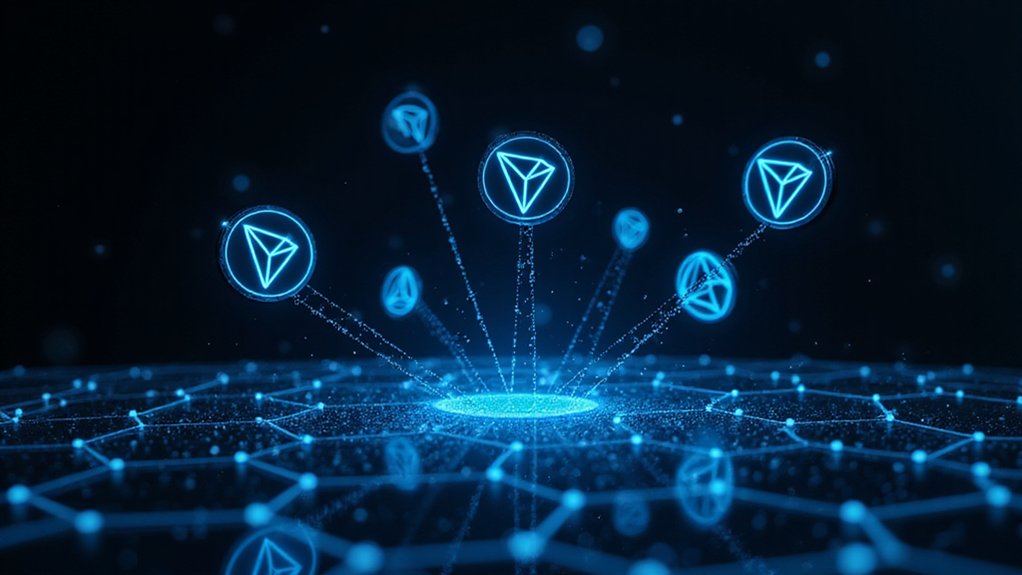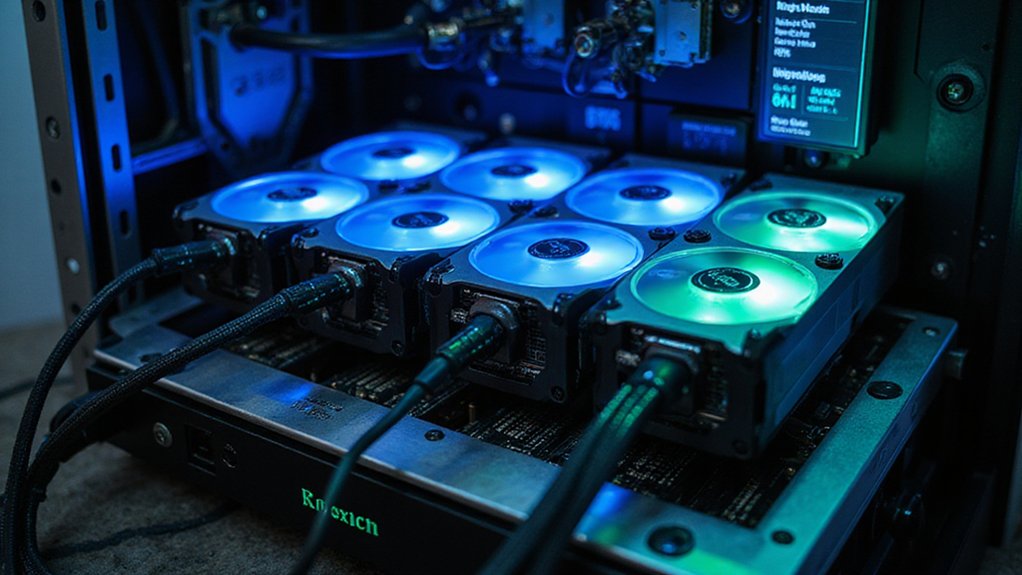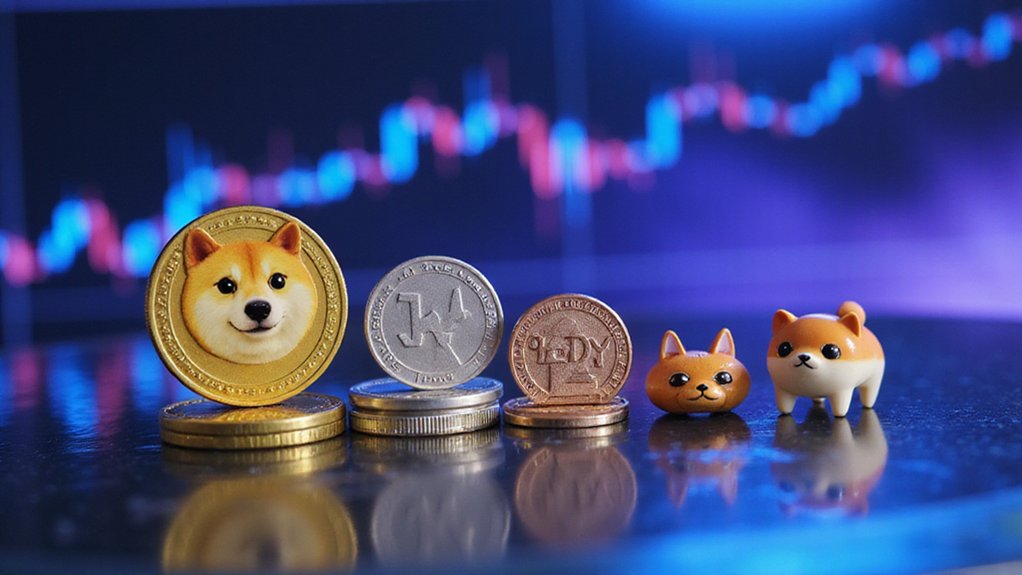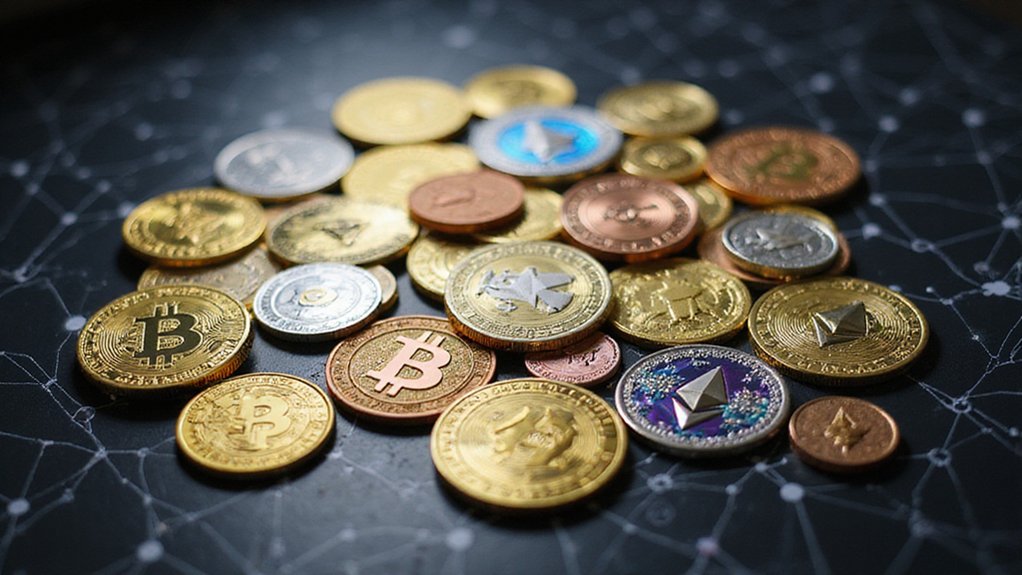Tron is a blockchain platform launched in 2018 that positions itself as Ethereum’s more cost-effective alternative. Operating on a Delegated Proof of Stake consensus mechanism with 27 elected Super Representatives, it processes approximately 2,000 transactions per second—significantly outpacing Ethereum. The native TRX token powers transactions, enables staking, and grants governance rights within its ecosystem, which supports TRC-20 tokens and applications spanning gaming, finance, and content delivery. The platform’s bandwidth-based fee system offers a novel departure from congestion-prone models.
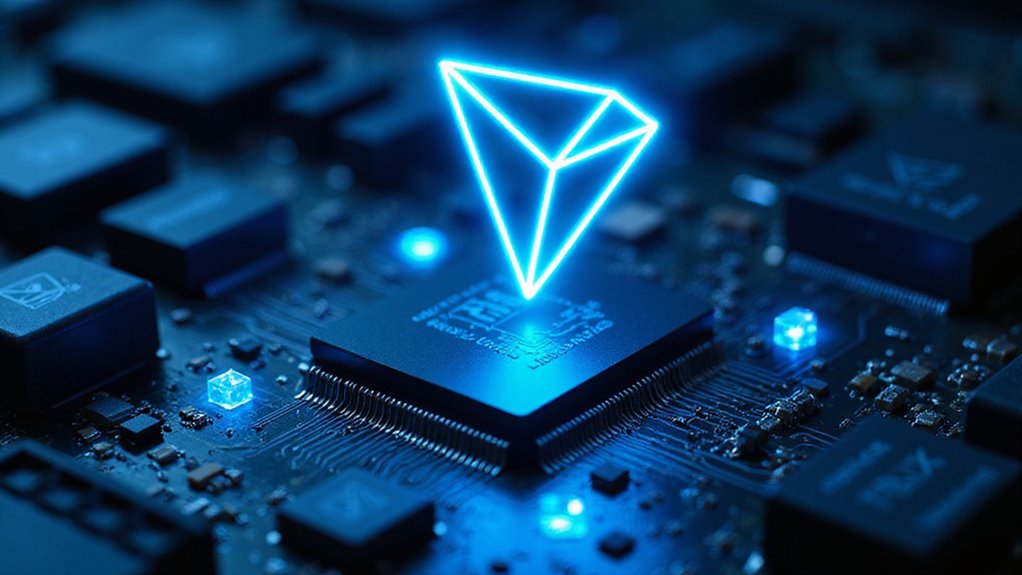
How did a relatively young blockchain platform manage to position itself as a formidable competitor to Ethereum in just a few years?
Launched in 2018 by Justin Sun, Tron has rapidly ascended the blockchain hierarchy by offering an EVM-compatible Layer 1 solution with substantially reduced transaction costs and improved scalability—a combination that has proven irresistible to developers fleeing Ethereum’s congestion and prohibitive fees.
The platform’s Delegated Proof of Stake (DPoS) consensus mechanism replaces the energy-intensive mining operations of its predecessors with a more streamlined approach: 27 elected Super Representatives validate transactions and produce blocks, while TRX holders influence network governance proportionally to their stakes.
The platform’s native cryptocurrency, TRX, serves multiple functions beyond mere value transfer.
It acts as the fuel for transaction processing, provides staking opportunities, and grants governance rights to those willing to lock their assets into the ecosystem—a clever mechanism that aligns individual incentives with network health.
Unlike Ethereum’s gas fee model (which can, during periods of congestion, border on the extortionate), Tron implements a bandwidth-based system where users receive 600 bandwidth points daily, with additional capacity available through TRX staking.
Tron’s bandwidth-based fee system elegantly bypasses Ethereum’s congestion-prone pricing, offering daily free transactions with scalable capacity through staking.
This innovative approach to transaction processing has enabled Tron to achieve throughput speeds of approximately 2,000 transactions per second—dwarfing Bitcoin’s and even Ethereum’s pre-2.0 capabilities.
Such performance metrics have proven particularly attractive to content creators and emerging markets, where micropayments and frequent transactions form the backbone of digital economies.
The platform also supports the creation of TRC-20 tokens, which function similarly to Ethereum’s ERC-20 standard but with greater speed and efficiency on the Tron blockchain.
The platform’s stated mission—to decentralize the internet by eliminating intermediaries from content distribution—has found expression in a diverse ecosystem of decentralized applications spanning gaming, finance, and social media.
While Tron’s meteoric rise hasn’t been without controversy, its technical architecture has demonstrated remarkable resilience.
The acquisition of BitTorrent in 2018 further strengthened Tron’s infrastructure, enabling faster content delivery and expanding its decentralized file-sharing capabilities.
Frequently Asked Questions
How Does Tron Compare to Ethereum?
Tron and Ethereum represent distinctive blockchain philosophies—the former prioritizing speed and cost-efficiency via DPoS consensus (achieving 2,000 TPS versus Ethereum’s modest 15), while the latter emphasizes security and decentralization through its PoS mechanism.
Ethereum boasts a more mature DApp ecosystem with widespread ERC-20 adoption, whereas Tron’s TRC-20 standard offers fee-free, rapid transactions that appeal to specific use cases.
Both platforms support smart contracts, though Ethereum’s network congestion remains an Achilles’ heel that forthcoming upgrades aim to address.
Is Tron a Good Investment?
Tron’s investment viability remains questionable given its significant governance issues, particularly the recent USDD reserve withdrawals without proper authorization.
While it offers technical advantages over Ethereum (faster transactions, lower fees), these benefits are counterbalanced by centralization concerns and plagiarism accusations that have dogged its reputation.
The cryptocurrency’s mid-tier market capitalization suggests some stability, but regulatory uncertainties and governance red flags make it a speculative proposition rather than a foundational blockchain investment for risk-averse portfolios.
What Unique Features Does the Tron Blockchain Offer?
TRON’s blockchain distinguishes itself through several architectural innovations.
Its three-layer structure (storage, core, application) supports a decentralized content ecosystem where creators publish directly on-chain.
The platform employs a graph database for efficient state storage and relationship mapping.
TRON’s DPoS consensus mechanism—maintained by 27 elected Super Representatives—enables impressive throughput (2,000 TPS) with transaction finality under three seconds, greatly outpacing Ethereum and Bitcoin while consuming less energy—a trifecta of speed, efficiency, and scalability.
How Can I Create Tokens on Tron?
Creating tokens on Tron requires choosing between two primary standards: TRC-10 (native, simpler tokens created directly through Tronscan with minimal energy costs) or TRC-20 (smart contract-based tokens offering enhanced functionality, akin to Ethereum’s ERC-20).
Developers can deploy tokens using Tronscan’s interface, TronLink wallet, or programming environments like Remix IDE.
The process typically requires a modest TRX reserve for resource allocation—a surprisingly straightforward endeavor for a blockchain that markets itself on accessibility.
What Are the Risks Associated With Using Tron?
Tron usage entails significant market volatility risk, with wild price fluctuations potentially decimating investments.
Security vulnerabilities—notably the silent hijacking exploit—threaten user assets, with over 14,500 addresses reportedly vulnerable.
Complex multisig wallet management can inadvertently create attack vectors rather than protection.
Regulatory ambiguity compounds these concerns, offering minimal investor safeguards.
Additionally, network vulnerabilities may expose users to breaches, while social engineering attacks target the human element—often the weakest link in any security architecture.
